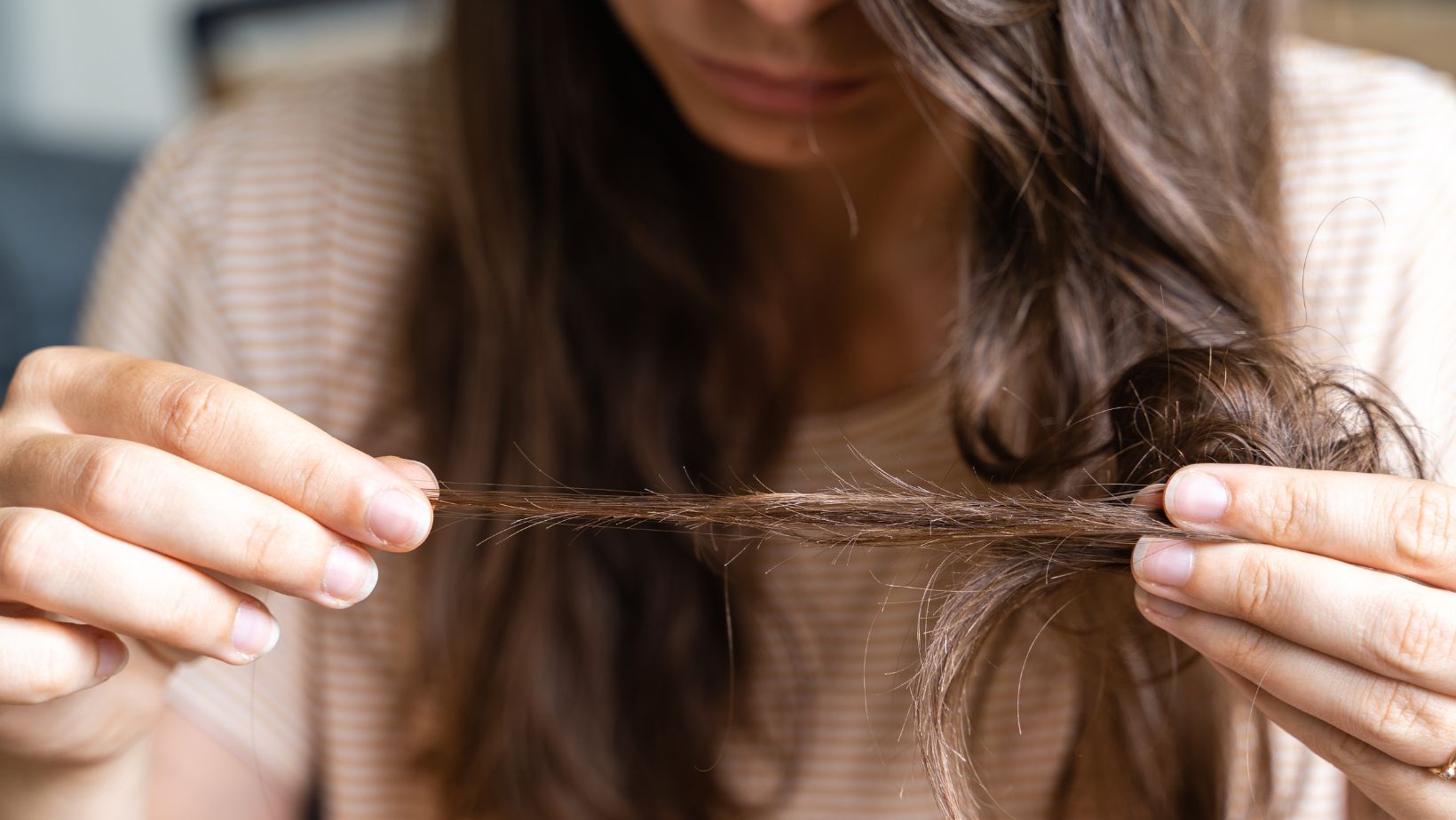Split Ends On Natural Hair: Causes And Solutions

Dealing with split ends on natural hair can be quite frustrating. As someone who has experienced this issue firsthand, I understand the struggle of trying to maintain healthy and beautiful locks. Split ends occur when the hair shaft becomes damaged, causing it to split into two or more strands. Not only do they make your hair look frizzy and dull, but they can also hinder its growth.
One common misconception is that split ends are solely caused by heat styling or chemical treatments. While these factors can contribute to their formation, there are other culprits as well. Environmental stressors such as harsh weather conditions, excessive brushing or combing, and even friction from certain fabrics can all lead to split ends.
Prevention is key when it comes to managing split ends on natural hair. Regular trims every 6-8 weeks help remove the damaged ends before they travel up the hair shaft. Additionally, adopting a gentle hair care routine that includes using a wide-toothed comb instead of brushes and avoiding excessive manipulation can go a long way in preventing further damage.
Understanding the causes of split ends on natural hair and taking proactive measures to prevent them is essential for maintaining healthy tresses. By incorporating regular trims and adopting a gentle approach to styling and maintenance, you’ll be well on your way to enjoying strong, vibrant locks without those pesky split ends.
Split Ends On Natural Hair
When it comes to dealing with split ends on natural hair, understanding the root causes is crucial. Here are some common factors that contribute to split ends:
- Lack of Moisture: Natural hair tends to be drier compared to other hair types. Insufficient moisture can lead to brittle and fragile strands, making them more prone to splitting.
- Overprocessing: Chemical treatments like relaxers, perms, and excessive heat styling can weaken the hair shaft and strip it of its natural oils. This leaves the hair vulnerable to damage and split ends.
- Mechanical Stress: Everyday activities such as combing, brushing, or tying your hair too tightly can cause friction and strain on the strands, leading to breakage and split ends.
- Environmental Factors: Exposure to harsh weather conditions, ultraviolet (UV) rays from the sun, pollution, and even hard water can all contribute to dryness and damage in natural hair.
- Improper Hair Care Practices: Using harsh shampoos containing sulfates or brushing wet hair vigorously can weaken the strands over time. It’s important to adopt gentle cleansing methods and handle wet hair with care using a wide-toothed comb or finger detangling.
- Nutritional Deficiencies: A lack of essential nutrients such as vitamins A, C, E, biotin, zinc, and omega-3 fatty acids can affect overall hair health and increase the likelihood of split ends.

Preventing Split Ends
Now that we’ve identified some common causes of split ends on natural hair let’s explore preventive measures you can take:
- Regular Trimming: Schedule regular trims every 8-12 weeks to remove existing split ends before they travel up the shaft causing further damage.
- Deep Conditioning Treatments: Deep condition your hair at least once a week using a moisturizing treatment rich in natural oils like coconut oil or shea butter. This helps restore moisture and strengthen the hair.
- Protective Styling: Opt for protective hairstyles that minimize manipulation and reduce exposure to environmental factors. Styles like braids, twists, buns, or wearing a satin scarf or bonnet while sleeping can help preserve your hair’s health.
- Moisturize and Seal: Keep your hair hydrated by moisturizing it regularly with water-based products and sealing in the moisture with natural oils or butters. This helps maintain elasticity and prevents dryness.
- Heat Styling Precautions: Limit the use of heat styling tools and always apply a heat protectant product before using them to minimize damage caused by high temperatures.
Incorporating protective styling into your natural hair routine can be a game-changer when it comes to preventing split ends. Whether you choose braids, buns, twists, wigs, or low manipulation styles, be sure to prioritize regular moisturizing and deep conditioning treatments to keep your locks nourished and resilient. With proper care and these preventive measures in place, you’ll be well on your way to healthier hair with fewer split ends.
By understanding the causes of split ends on natural hair and adopting preventive measures, you can keep your tresses healthy, strong, and free from those pesky split ends! Remember to listen to your hair’s needs, be consistent with your routine, and adjust as necessary for optimal results.
What's Your Reaction?
Deepak is a lover of nature and all things sporty. He loves to spend time outdoors, surrounded by the beauty of the natural world. Whether he's hiking, biking, or camping, Deepak enjoys being active and in touch with nature. He also loves to compete and push himself to his limits. Deepak is an avid cyclist, runner, and swimmer. He has competed in several triathlons and marathons, and is always looking for new challenges to take on.


